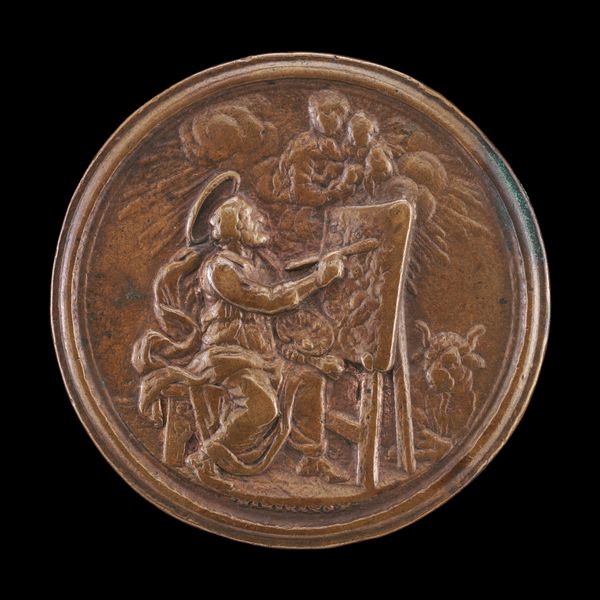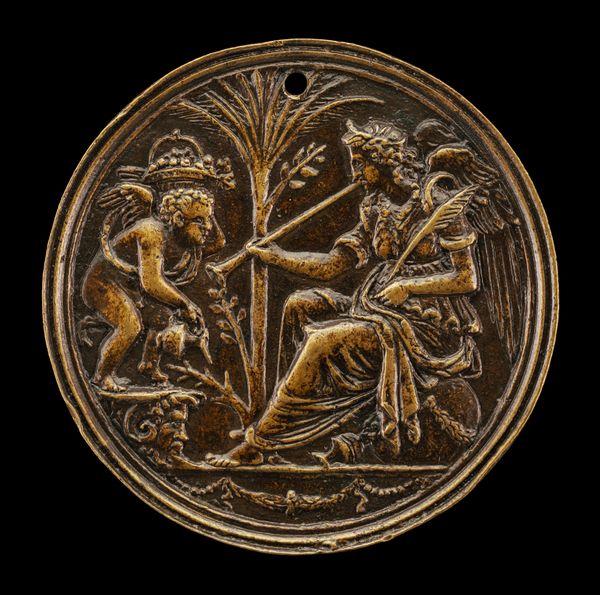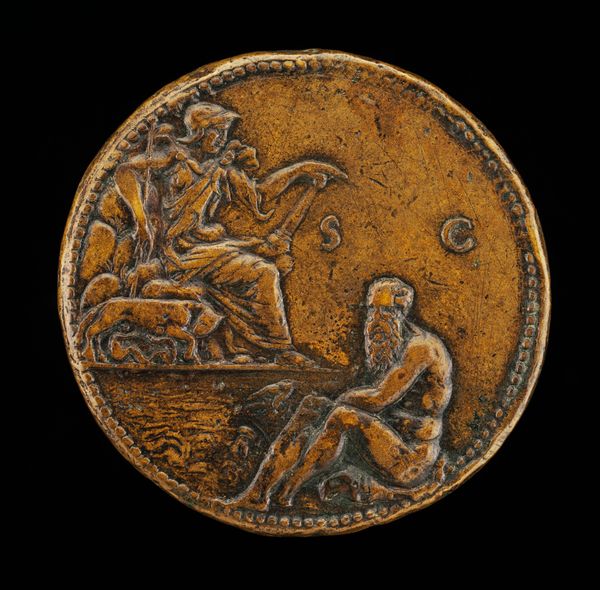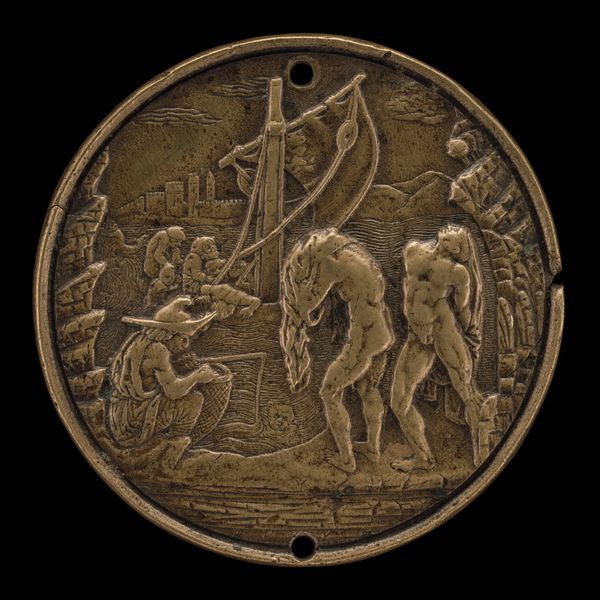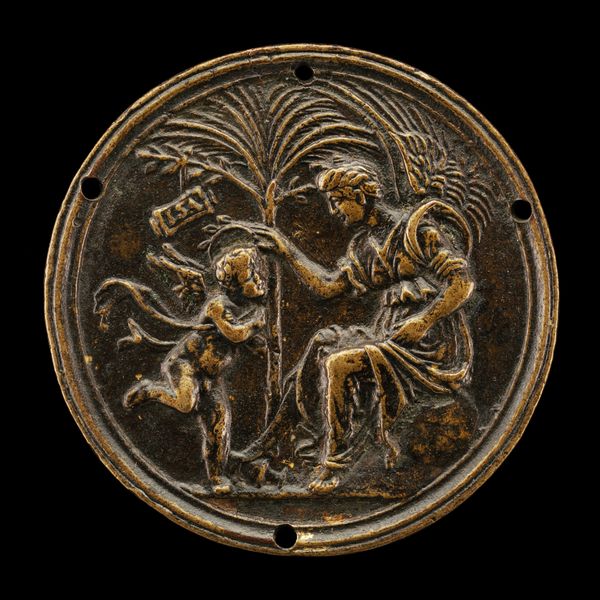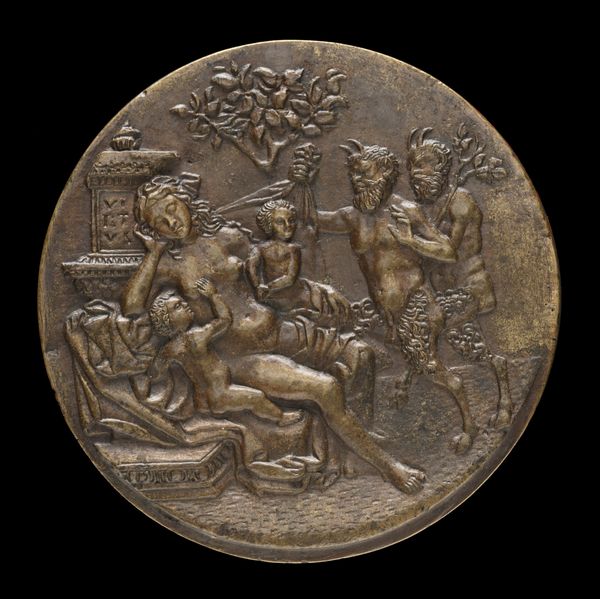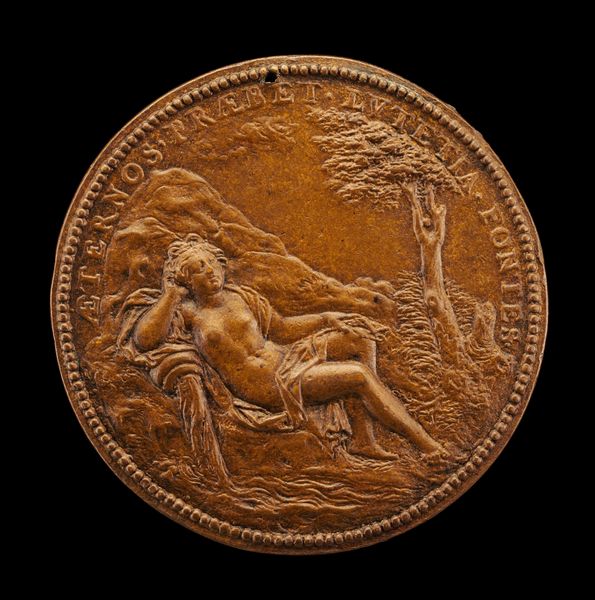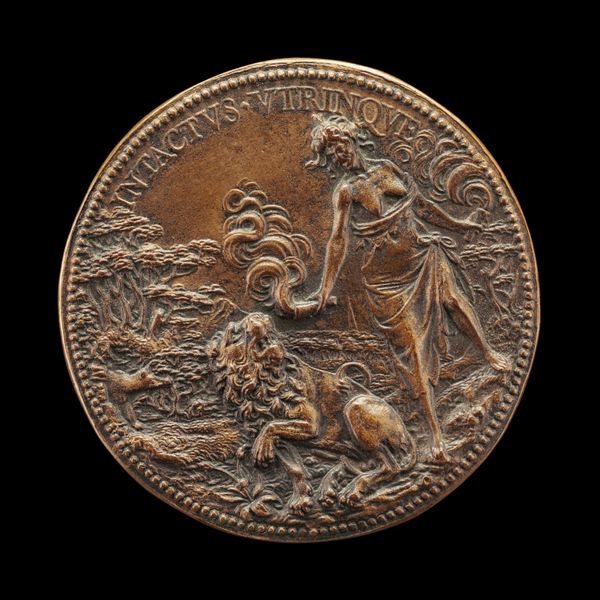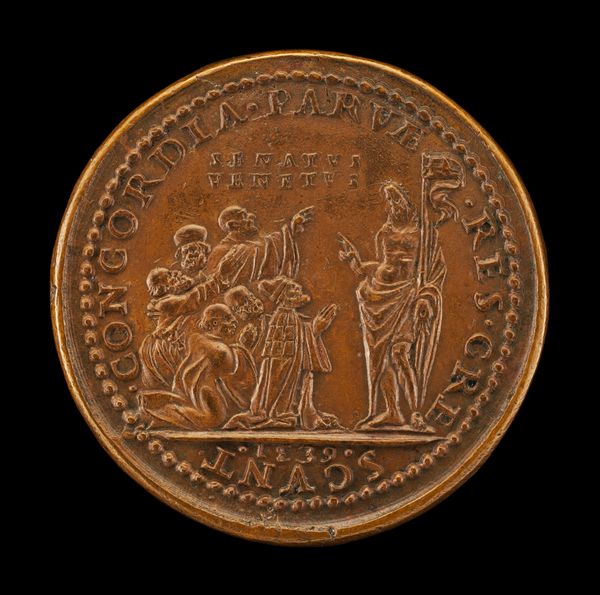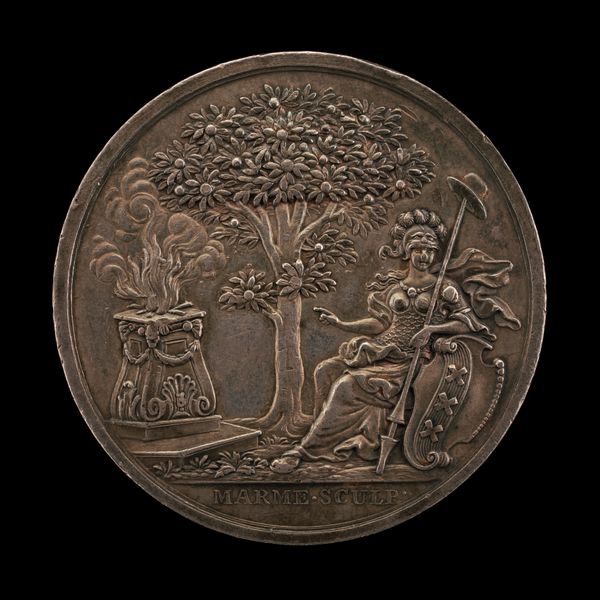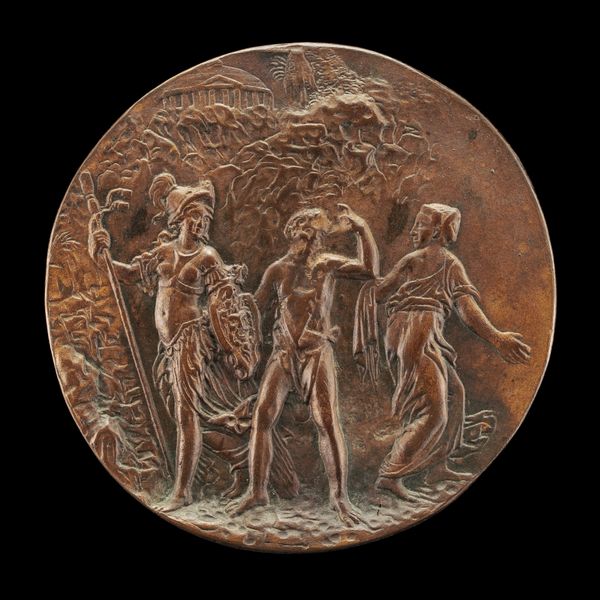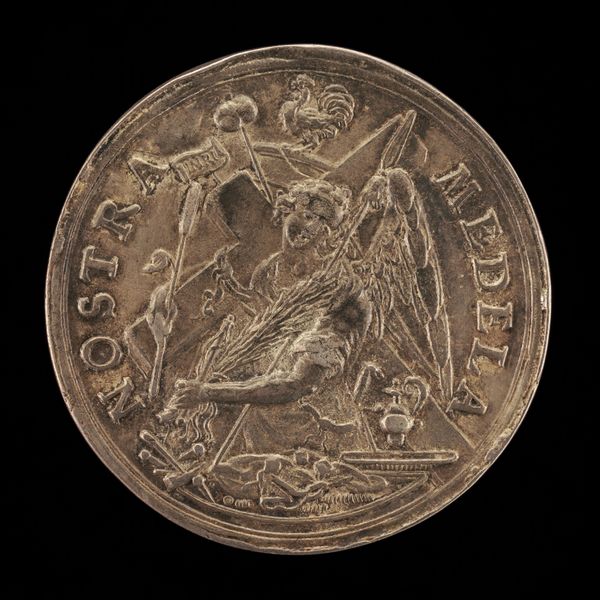
metal, relief, bronze, sculpture
#
allegory
#
metal
#
stone
#
sculpture
#
relief
#
bronze
#
figuration
#
11_renaissance
#
sculpture
#
italian-renaissance
Dimensions: overall (diameter): 6.03 cm (2 3/8 in.) overall (diameter to broken edge): 5.7 cm (2 1/4 in.) gross weight: 46.27 gr (0.102 lb.)
Copyright: National Gallery of Art: CC0 1.0
Curator: Editor: So, here we have Andrea Briosco's "An Allegorical Scene (Fame & Eros)", a Renaissance bronze relief. The detail achieved in the metal is captivating. What stands out to you? Editor: It's the tension between the figures that grabs me. Fame looks so serene while Eros seems almost… confrontational. What do you see in the choice of bronze here, beyond the aesthetic? Curator: It is very significant. Bronze casting during the Renaissance was far more than a purely artistic activity; it represented a complex interaction between artist, patron, and workshop. The alloy itself reflects access to resources. Think about the economics of Venetian bronze production – who controlled the mines? Who invested in the workshops that were commissioned to realize objects such as these? The means of its creation are key to its purpose. Editor: That’s a fascinating point. It pushes us to think about who funded the work and how it was produced rather than just focusing on artistic merit. Curator: Exactly. Consider, for example, the repetitive nature of bronze casting. There's labor involved in preparing the molds, managing the furnaces. The creation of multiples, even from a single design, challenges notions of artistic originality and singular genius that we often impose upon Renaissance art. Editor: It challenges our ideas about art being purely about aesthetics. Considering the labor behind this really contextualizes it, shifting the meaning. Curator: Precisely. Thinking about these material realities demystifies the aura around “great art” and helps us see the piece as the product of material conditions. Something to always consider when you are viewing artwork. Editor: It gives the image itself so much more to work with. Thank you! Curator: You're welcome. Keep digging beneath the surface.
Comments
No comments
Be the first to comment and join the conversation on the ultimate creative platform.
